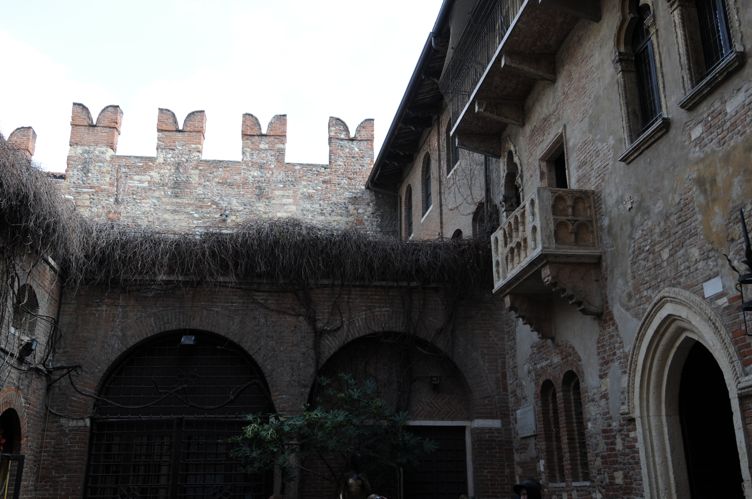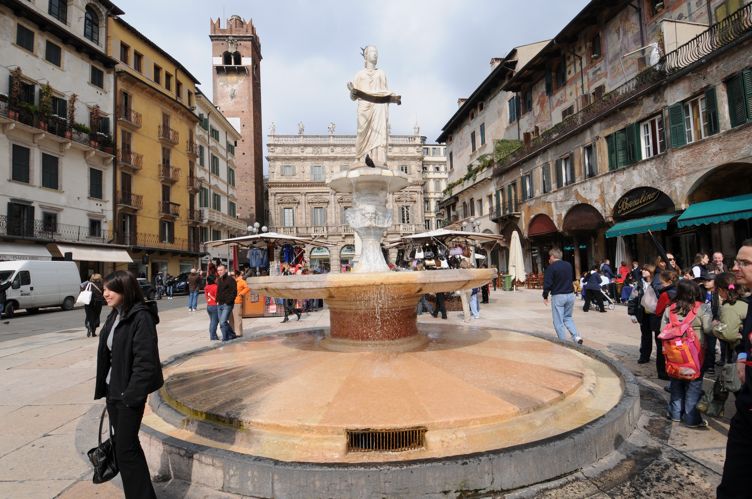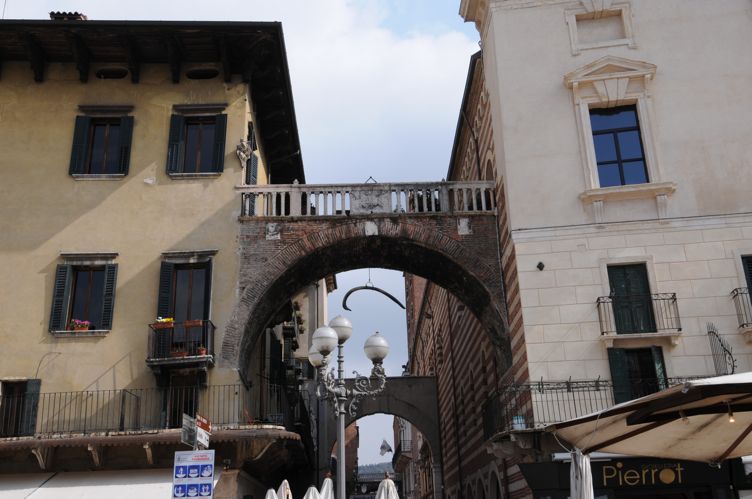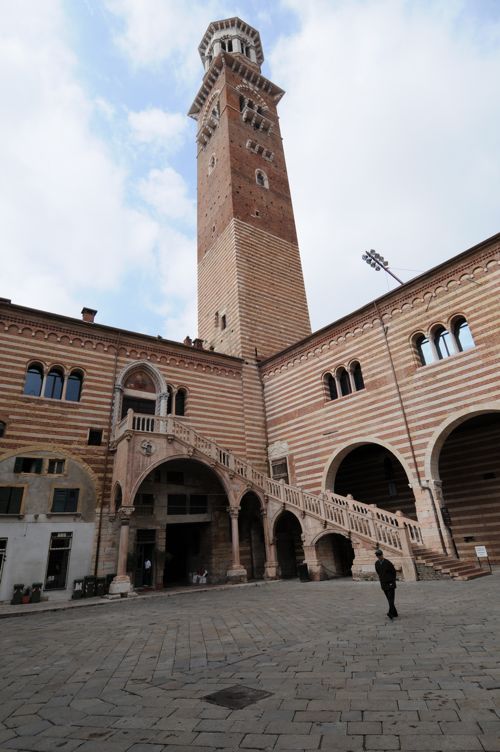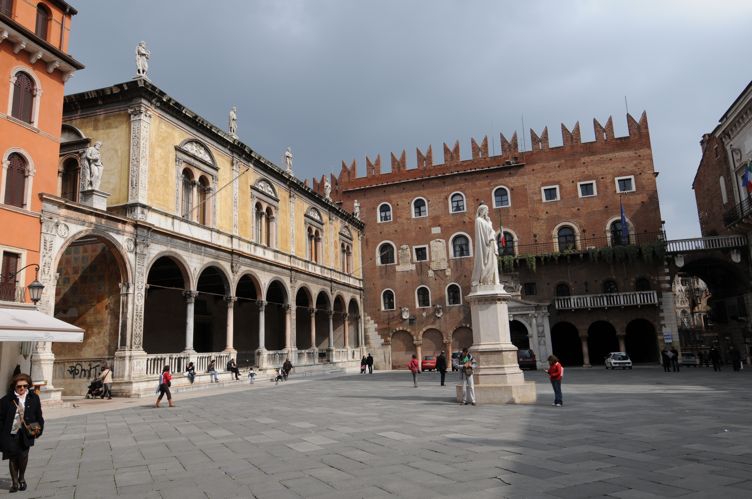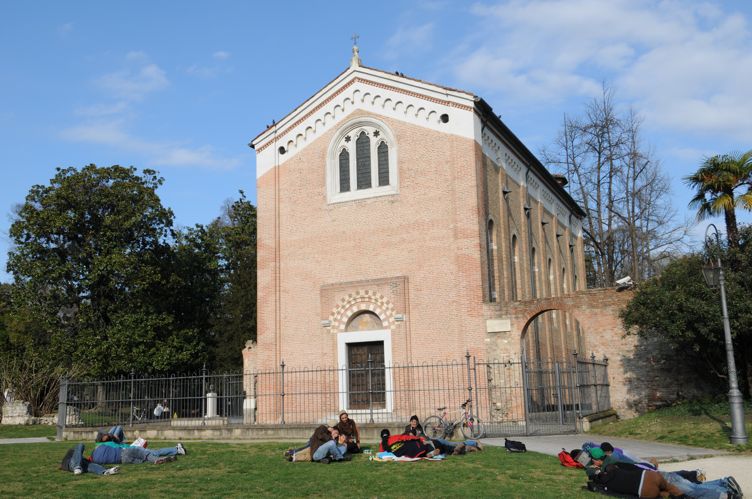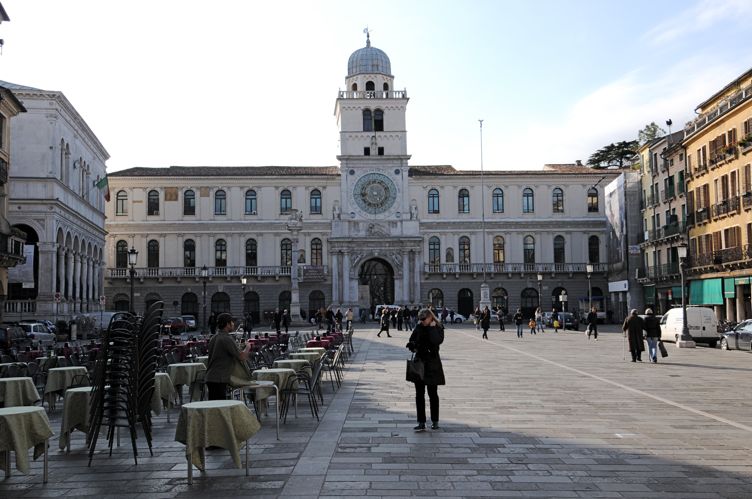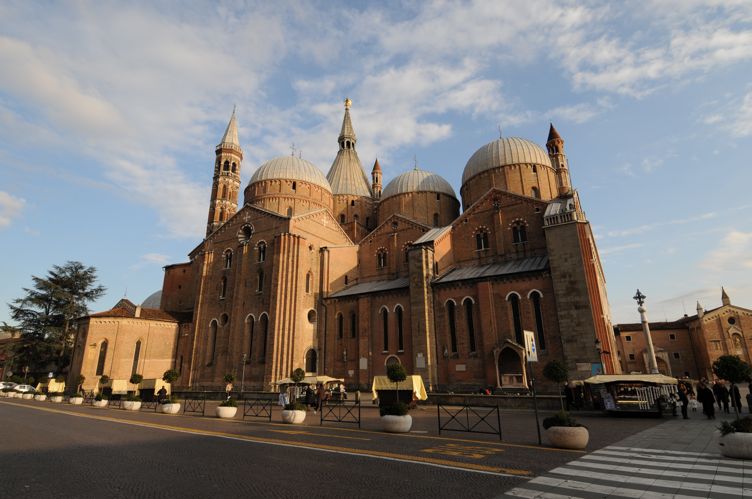We woke up early and were off to Verona. This beautiful and ancient town on the Adige River is well worth a visit.
The Roman Arena was built in the 1st century and while not as big as Roman Coliseum it is amazingly well preserved. The guidebook suggested that it was “saved” by an abundance of marble queries in the area as there was no need to loot marble from existing structure. During summer months it becomes Italy’s largest opera theatre that can seat 15,000 spectators. Elaborate opera productions are being staged and many tourists come to Verona specifically for this experience.
After visiting the Arena, we walked down elegant Via Mazzini, the street with many notable names on the stores. At the end of the street a sign was pointing to Casa Juliette. We knew that it wasn’t the real Juliet’s house but still worth a very brief detour. Quite a lot of tourists were snapping pictures of the balcony and the statue of the girl in the courtyard.
From there we walked on Piazza delle Erbe, the lively market square. During the Roman times, it was the center of town and the Forum was situated here. The fountain was built in 14th century by using Roman statue. The square is surrounded by the palaces built in various periods, some of which are decorated with the frescoes. There are two medieval towers overlooking it as well - Torre dei Lamberti, the highest tower in Verona, and Torre del Gardello.
We walked under Arco della Costa (Arch of the Rib) to the adjacent square. The arch’s name comes from the whale bone that hangs underneath it and various myths are attached to this bone.
The adjacent square was Piazza dei Signori where the major administrative palaces of medieval Verona are situated, among them the 12th-century Palazzo della Ragione (Palace of Reason), 15th-century’s Loggia dei Consiglio (Portico of the Counsel), and 14th Ðcentury Palazzo del Capitanio (home of the Verona’s military commanders). The statue of Dante Alighieri stands at the center of the square.
Dante stayed at the Scaligeri Palace during his exile from Florence. The Scaligeri family ruled Verona from 1260 to1387. Their gothic tombs are located at the church just off the square.
Next stop was at the church of St.Anastasia. It was built in the gothic style and is adorned with many works of art. And pictures were allowed!
From there we walked to the river and across the Ponte Pietra, a roman stone bridge, to the Roman Theater. This theater is also very well preserved and is used today for open-air performances. It must feel surreal watching Two Gentleman of Verona or Romeo and Juliet at the ancient Roman Theater in Verona.
We walked back across Ponte Pietra back to visit the Duomo, Verona’s cathedral, built in the 12th century.
Then we walked along the river toward Castleveccio, the Old Castle. It was built in the 14th century and was intended both as a home and a defensive fortification.
We really enjoyed our visit to Verona.
Another town we planned to visit on our trip was Padua. The train between Venice and Verona passes thru Padua and it was early enough in the afternoon that we thought we had enough time for a brief visit.
Padua claims to be the oldest city in northern Italy. Not much has remained from the antiquity, though, as in 1452 the Padua was destroyed by the Huns, under Attila. We passed by the ruins of the roman arena in the park where Scrovegni Chapel with its famous Giotto frescoes is located.
As we walked thru Padua we thought we have experienced a deja vu because we were once again seeing Piazza dei Signori, Piazza delle Erbe, Palazzo della Ragione and Palazzo del Capitanio again. They didn’t look quite the same, though.
The Palazzo della Ragione, constructed between 1172 and 1219, is said to have the largest roof unsupported by columns in Europe.
Padua is an old university town. The university was founded in 1222. Galileo taught in Padua from 1592 to 1610. The famous Anatomy Theatre, where Vesalius taught, is the oldest in the world, being built in 1594.
The most famous of the churches in Padua is the Basilica di Sant’Antonio da Padova, known locally as “Il Santo”. It was built from 1230 and 1310 to house the remains of St. Anthony of Padua. Its Byzantine style domes are similar to the San Marco’s Basilica. Inside of the basilica is very richly decorated and a lot of activity was taking place.


